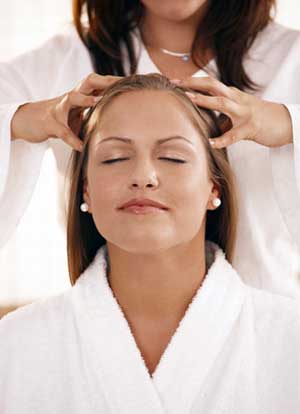Incorporating a scalp massage into one's hair care routine before shampooing can offer significant benefits, particularly when the scalp and hair are exceptionally dirty, such as after a workout. Utilizing oil in the massage process can attract and remove excess oil from the scalp, creating a cleaner foundation for subsequent washing. This method also helps to protect hair from breakage, which is more likely to occur when the hair is wet and vulnerable.
Avoid Using Nails During Scalp Massage
When massaging the scalp in the shower, it is essential to avoid scratching with the nails. This practice can cause irritation and potential infections due to bacteria and dirt that may be present under the nails. Instead, using the pads of the fingers allows for safe and effective pressure application, avoiding the risks associated with nail scratching.
Thorough Scalp Scrubbing Technique
Ensuring that every part of the scalp is thoroughly scrubbed is key to a satisfying and effective wash. This process often feels more fulfilling when done by someone else because they have a clear view of the entire scalp. When washing your own hair, it is beneficial to start at strategic points such as the back of the head or temples, which are prone to sweating. Working in a circular motion towards the center of the scalp ensures comprehensive coverage.
Attention to Hairline Hygiene
The hairline can accumulate dirt and sweat, making it a crucial area to address during scalp care. Salon professionals often focus on this area, not only for cleanliness but also for its relaxing benefits. Massaging the temples and hairline stimulates blood flow and eases tension. Starting with circular motions at the temples and moving upwards and around the head can enhance both cleanliness and relaxation.
Focusing on the Back of the Head
The area where the neck meets the base of the skull is another important focus during a scalp massage. This region tends to sweat and carry tension. Applying light pressure with both thumbs at the base of the skull and massaging in a circular motion can relieve tension and improve overall scalp health. Gently pulling the skin upwards can also enhance the massage's effectiveness.
Optimizing Conditioning Rinse
Shampooing can strip the hair of its natural oils, particularly impacting those with fine hair. To mitigate potential damage, it is advisable to delay the scalp massage until after shampooing. Applying conditioner to the ends of the hair allows for easier separation and access to the scalp with minimal pulling. Rinsing with cooler water can seal the hair cuticles, enhancing shine and overall hair health.
The Science Behind Scalp Care
The health benefits of regular scalp massages are backed by scientific research. Massaging the scalp can increase blood circulation, which in turn can promote healthier hair growth. The stimulation of blood flow to the hair follicles ensures that they receive the necessary nutrients and oxygen, fostering a more robust and resilient hair structure.
Incorporating Essential Oils
Using essential oils such as tea tree oil, lavender oil, or peppermint oil can further enhance the benefits of scalp massages. These oils have antimicrobial properties that help in keeping the scalp clean and free from infections. Additionally, the aromatherapy benefits of these oils can provide a relaxing and soothing experience, reducing stress and tension.
Practical Tips for Home Scalp Massages
For those new to scalp massages, starting with simple techniques can be beneficial. Begin by parting the hair into sections and applying a small amount of oil to each section. Use gentle circular motions to massage the oil into the scalp, taking care to cover the entire scalp surface. This practice not only cleanses the scalp but also distributes the natural oils more evenly, preventing dry patches.
Professional Scalp Treatments
For a more intensive treatment, professional scalp massages at salons can offer a deeper level of care. These treatments often incorporate specialized products and techniques designed to address specific scalp issues such as dandruff, excessive oiliness, or hair thinning. Regular professional treatments can complement at-home care routines, ensuring the scalp remains in optimal health.
The Role of Diet and Hydration
Maintaining a healthy scalp is not solely dependent on external treatments. A balanced diet rich in vitamins and minerals is crucial for scalp health. Nutrients such as biotin, vitamin E, and omega-3 fatty acids play a significant role in maintaining healthy hair and scalp. Additionally, staying hydrated ensures that the scalp remains moisturized, preventing dryness and flakiness.
Addressing Common Scalp Issues
Various scalp issues can impact overall hair health. Dandruff, for instance, can be managed with regular scalp massages using anti-dandruff oils or shampoos. Scalp psoriasis or eczema may require medicated treatments and should be addressed under the guidance of a healthcare professional. Regular scalp massages can alleviate some symptoms by reducing dryness and promoting better skin health.
Conclusion
Incorporating regular scalp massages into one's hair care routine offers numerous benefits, from improving hair cleanliness to enhancing relaxation and tension relief. By using the right techniques and products, individuals can maintain a healthy scalp, leading to healthier and more vibrant hair. Whether performed at home or in a salon, scalp massages are a valuable addition to any hair care regimen, promoting overall wellness and hair vitality.

